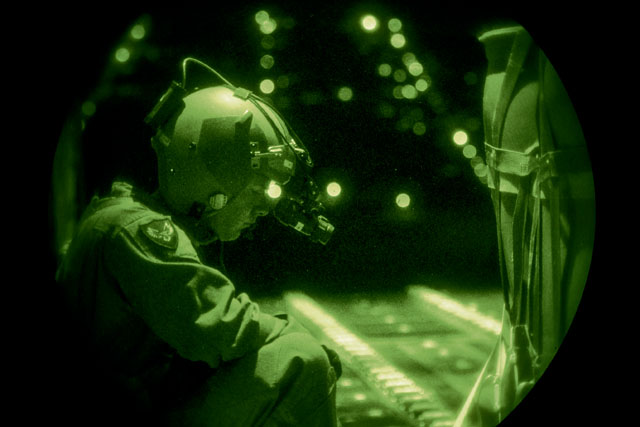
OTOPENI AIR BASE, Romania — After many takeoffs and touchdowns, Carpathian Summer 2018 comes to a close. The training exercise brought pilots and aircrew from the U.S. Air Force and Romanian air force together to enhance interoperability and readiness of forces.
Carpathian Summer 2018 resulted in successful low-level flying, personnel and cargo airdrops, night formations, and survival training; all of which incorporated the combined airpower between the two allied forces.
“One of the primary objectives of Carpathian Summer is building partner capacity and establishing relationships with the Romanians while simultaneously interflying with them” said U.S. Air Force Capt. Daniel Castro, 37th Airlift Squadron pilot. “We’ve been able to accomplish a lot of successful airdrops and air-land missions, both night and day.”
Castro said he and his wingmen learned how the Romanians work around the flightline and were able to integrate the dispatch of aircraft successfully, strengthening their partnership for contingency operations.
“A lot of planning and work goes into getting these sorties off the ground,” said Castro. “That being said, it’s been enjoyable. Every day we learned something new.”
All in all, Castro said the exercise went smoothly and that it helps the two air forces aren’t very different when it comes to flying operations.
“Working with the Romanians is easy,” he said. “We share a lot of the same goals. It’s almost like we’ve been working together for a long time.”
Romanian air force Col. Emil Tecuceanu, 90th Operational Group commander and Carpathian Summer 2018 exercise director, shared his own perspective on the exercise.
“I only have good feedback, not only for the exercise, but also for our training together and how we work together,” he said. “We have a very strong relationship. We can better understand each other, and we can operate better not only in peacetime but also in tough situations.”
When asked about his favorite part of the exercise, Tecuceanu said he liked watching the two crews working together to reach objectives.
“When we had the C-130J models with the C-27J models flying [with night vision goggles] in tough terrain and operating together, it made me happy,” said Tecuceanu.
Tecuceanu said the squadrons will go back having a better understanding of how to operate as one so they are ready to fly together in the future.


